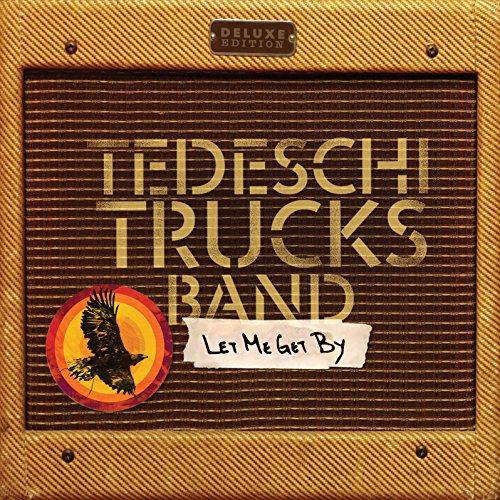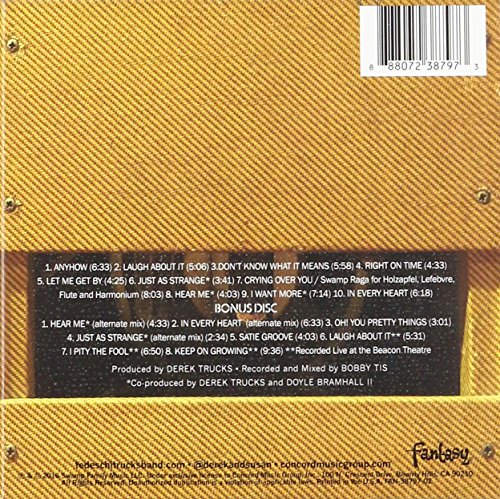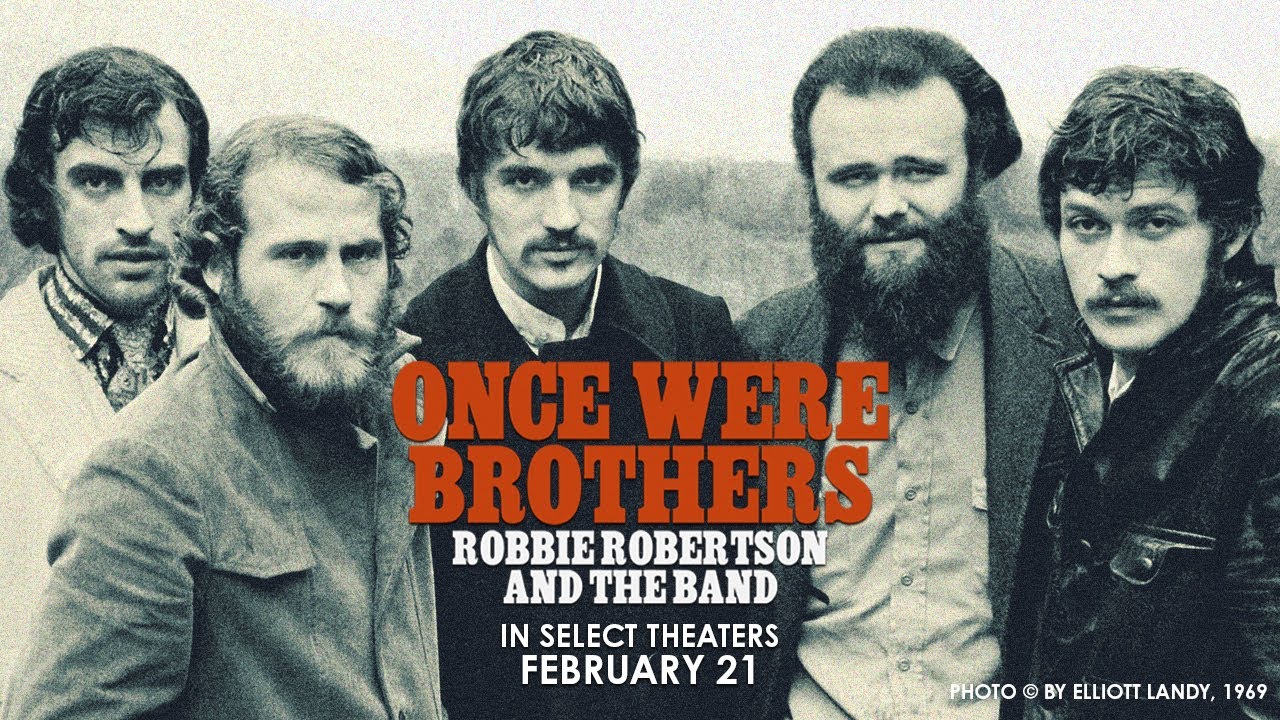
“We few, we proud, we band of brothers.” — Shakespeare, Henry V
Once Were Brothers: Robbie Robertson and The Band, a documentary film by Daniel Roher, plays at 4:15 p.m. Wednesday and Thursday, at the Oriental Theater, 2230 N. Farwell Ave, Milwaukee, WI 53202 (414) 276-5140
__________
This story needed to be told again, on Robbie Robertson’s terms, even as it needs telling from all five. Three are gone, so Robbie the wordsmith stands best to speak here, anew and anon. And The Band started with him; it’s roots arose when he converged with Levon Helm and Ronnie Hawkins and the Hawks. But this needed to be told because the Band lasted too short a time for the America it embraced and re-imagined, the nation that needed a band like this, to remind us who and what America was, and is, and might be.
For perhaps no other American vernacular band compressed more talent into one entity, like pages of a tattered book filled with dried and pressed leaves, shadows and light, and music of American spheres. It was a great North American band, comprising four Canadians and one Arkansan, who embodied “Canadian driftwood, gypsy tailwind,” as they regaled us on one of their late, great saga-songs.
We need this story because, well, as the venerable roots purveyor Taj Mahal asserts here, they are the closest we have to the American Beatles. Daniel Roher’s film provides classic and never-published photos and film footage of their life in Woodstock. N.Y. and at the house called Big Pink, on the road, and reflections from most band members, but mainly Robertson’s and those of his wife Dominique, their road manager and some celebrated others.
But Mahal’s claim begs examination, because the band’s peak years lasted less than the Beatles. Both bands emerged from, and remained rooted in, rhythm and blues, and rockabilly, blues, and country. Like their counterparts, the North Americans drew from British Isle folk sources as well. Stylistically where they diverged was when the Beatles embraced psychedelia. The Band arrived right about that time, but driven by older forces, and enamored of the rustic weirdness, oily charm, verve, wit and tragedy that would come to be called Americana, a genre they forged as much as anyone. As Robertson points out, “The rock generation revolted against their parents but we loved our parents.” They had a sprawling family portrait taken during the Basement Tapes sessions.
And yet their extraordinary quintet synergy also made for some of the bitterness that would ultimately arise, perhaps justified (more on that later).
“It was such a beautiful thing. It was so beautiful that it went up in flames,” Robertson reflects.
More on the Beatles comparison. Both had magnificent and glorious songwriting, though the Beatles were more diverse with three gifted writers, which may be their greatest claim, aside from the phenomenal impact they had on our culture. The Band had primarily Robertson writing songs, but they had that three-part harmony, probably the most fulsome and profoundly textured of any popular group, because these were also “three of the greatest white rhythm-and-blues singers in the world at the time,” as Eric Clapton comments.
“They have voices that you’d never heard before, and yet they sound like they’ve always been there,” rhapsodizes Bruce Springsteen.
Here, The Band has a leg up on the more famous British band, whose third and fourth singers were only serviceable, though George and Ringo had their moments.
The Band was also instrumentally superior, again, to almost almost any rock ’n’ roll band, especially in ensemble, given their kaleidoscopic versatility. Bassist-singer Rick Danko was capable with several horns and string instruments. Classically-trained Garth Hudson played organ, synthesizer, accordion, saxophones, brass, and piccolo. Drummer-singer Hudson also played mandolin.
Guitarist Robertson developed a style that startled and even intimidated many guitarists, even if he wasn’t the typical virtuoso pealing off chorus after dazzling chorus. Few pickers had a sharper rhythmic flair, or could make a guitar bite, sear, and jump for joy, almost at once. Richard Manuel played piano, clavinet and drums, and sang with the most soul-haunting voice of any of them. I’m probably forgetting a few axes. Clapton was so moved — “they changed my life” — that he forsook his two fellows of the psychedelic-blues-rock trio Cream at its peak, in hopes he could join The Band. “Maybe they’d need a rhythm guitar,” he says.
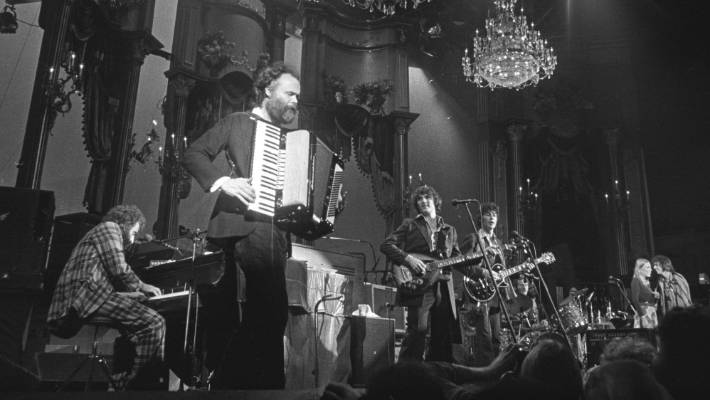
The band performs in the concert film “The Last Waltz.” (Left to right) Richard Manuel, piano and vocals; Garth Hudson, accordion, keyboards and saxes; Rick Danko, bass and vocals; Robbie Robertson, guitar; Levon Helm, drums; Joni Mitchell and Neil Young, vocals.
As for style, their playing and singing blended looseness and precision, defiant resolve and abandon, high humor and pooling sadness. They fully inhabited the characters dwelling in Robertson’s songs of American archetypes — dirt farmers, varmints, vagabonds, drunkards, Dixie fighters. “Virgil Cain is my name and I worked on the Danville train,” Helm sings on the forlorn, feisty epic “The Night They Drove Old Dixie Down.” “They reminded me of 19th century American literature, of Melville’s stories of searchers,” film director Martin Scorsese ponders.
Barney Hoskyns, biographer of The Band, has a similar reflection, by way of quoting the great American critic Greil Marcus: “…their music gave us a sure sense that the country was richer than we had guessed.’” Hoskyns adds: “If there was any band that could get to the heart of the mystery that pervaded rural life in America, then The Band was it. Nathaniel Hawthorne may have been right when he wrote of Americans that ‘we have so much country that we have really no country at all’,’ but The Band managed to create a sense of its adopted land that was at once precise and mythical.” 1
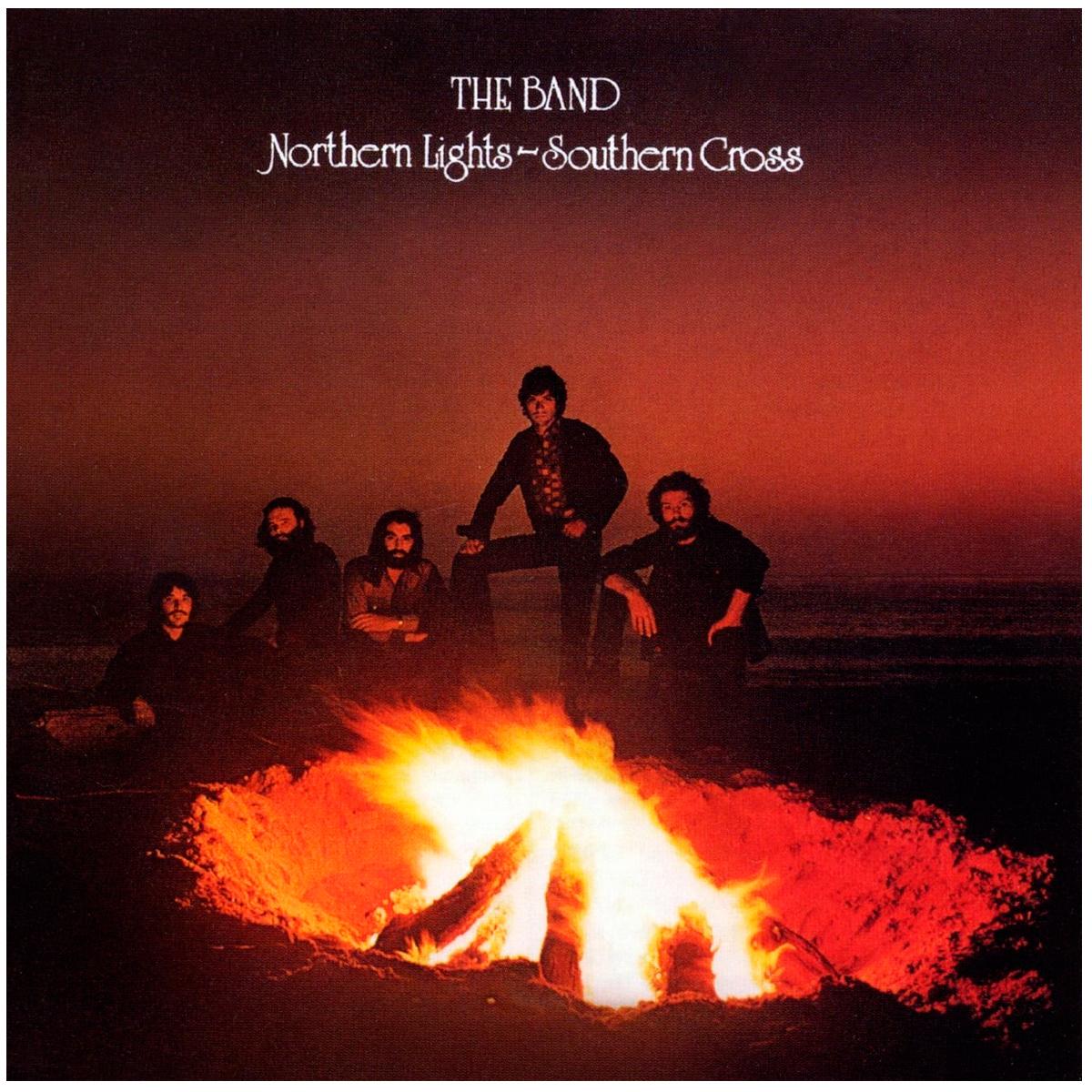
Courtesy Nebraska Furniture Mart
The Band’s first two albums, Music from Big Pink and The Band, as well as Northern Lights-Southern Cross compare well to any Beatles album, as does, in its rough, eccentric ways The Basement Tapes with Bob Dylan. Stage Fright and Cahoots are right in the ballpark. Rock of Ages is a masterful live recording achievement, and Scorsese’s The Last Waltz remains arguably the finest concert documentary ever made, studded with stars, and The Band’s last-ever live performance at Winterland in San Francisco, in its original incarnation, here sweaty and transcendent.
I saw them once, at Summerfest, on their last 1974 tour, and the power and glory remained, though the poisons that killed it all festered beneath the surface.
Robertson recounts his prodigious rise when, at 15, he wrote two songs recorded by Canadian rock ‘n’ roll star Ronnie Hawkins and the Hawks. “That band was my own personal Big Bang,” Robertson says. He soon joined the Hawks, and they reformed as Levon Helm and the Hawks.
Aside from his musical and literary genius, Bob Dylan is an astute aficionado and observer of American musical talent. When he heard The Band he knew they had to be his. He approached them and they invited to their basement studios in their communal Woodstock home “Big Pink.” Dylan was dubious at first of recording there, as they only had a small reel-to-reel, but once they got down to it, things began flowing. Dylan clacked away song lyrics on his typewriter and they rehearsed.
The Basement Tapes is among the most mythical informal recordings in pop music history, largely Dylan songs, immensely enhanced by The Band. Before long they were touring, yet this was early in Dylan’s plugged-in phase. His still-faithful-to-folk-roots fans consistently booed the electric music, for all its quality. This rejection eventually wore on Helm, who was beginning to sink into drugs and alcohol, as were several others, especially Manuel, a sensitive soul, who struggled with depression, and would soon self-destruct. In time, disillusioned Helm quit the group to become an oil rigger in the Gulf of Mexico.
Robertson soldiered on with the group though somewhat devastated by the loss of his soul brother and best friend. He addresses the nature of creativity, saying it’s often a matter of “trying to surprise yourself. For example, if you look inside the sounding hole of a Martin guitar you see imprinted” made in Nazareth, PA.” One day I saw that and thought, ‘I pulled into Nazareth, was a feeling about half-past dead.’ Then I heard these voices, ‘Take a load off Fanny,’” and “The Weight” was born.
The Band performs “The Weight” with The Staple Singers, in “The Last Waltz.” YouTube
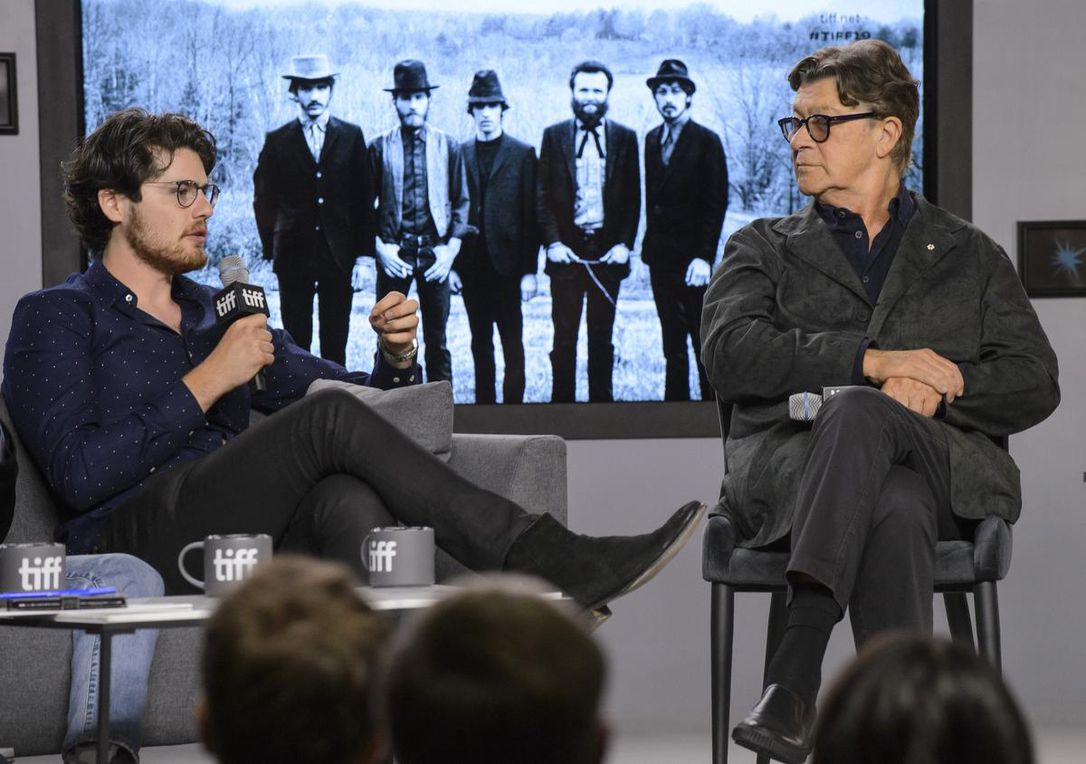
The Band’s Robbie Robertson (right) is interviewed about the new film “Once Were Brothers.” Courtesy The Toronto Star.
Enter producer entrepreneur extraordinaire David Geffen. He convinced Robertson to move to Malibu, CA, and a oceanfront property, and before long he’d lured the band members out there which replenished them. The result was the 1976 album Northern Lights-Southern Cross considered by many their best album since their second. It included three classic new songs “Acadian Driftwood,” “It Makes No Difference,” and “Ophelia” and no clunkers.
Robertson treads too lightly on the feud that developed between him and Helm. “Bitterness was setting in with Levon.” he muses. It had to do with the band members beginning to indulge in heroin. Robertson fortunately did not have an addictive makeup and was not chemically affected. But he does gloss Helms point of view which deeply resented all the royalties that Robertson received for their original music. Although Robertson wrote the majority of the songs, few bands could better fit the adage: The sum is greater than their parts. So there was a strong argument for all members sharing in some royalties.
Nor does Robertson address Richard Manuel’s devastating suicide in the film. So, it’s worth referring to Barney Hoskyns book Across the Great Divide: The Band in America, to give the subject some due. “The band had played capacity crowds for two shows which went well, despite the fact that Rick had complained to Richard about his drink. ‘We played a good show for good intelligent people,’ Rick said. ‘Talk was of the next show. That’s what we were all living for.’
After leaving the club, Richard headed back to the nearby Quality Inn and stopped by Levon’s room en route to his own. To Levon, he did not seem especially depressed. “I don’t know what got crosswise in his mind between leaving the foot of my bed and going into his bathroom.” Once in the room Richard finished off a bottle of Grand Marnier and his last scrapings of coke. Sometime between 3 and 3:30 AM on Tuesday 4, March, he went into the bathroom…
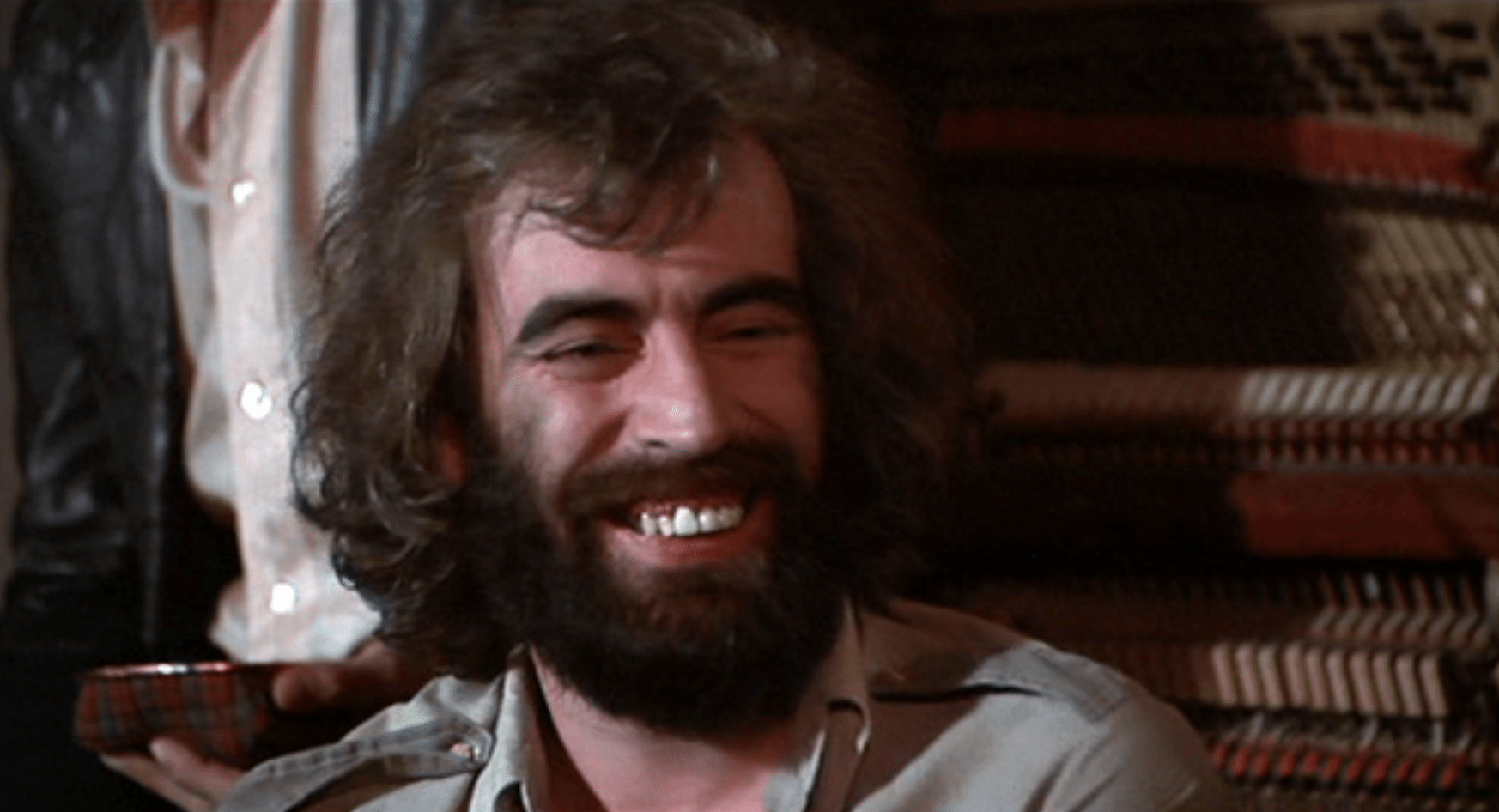
Richard Manuel. Courtesy Live for Live Music
Rick Danko was in shock, and denial. “I cannot believe in a million years that wasn’t a goddamn silly accident,” he said
“It seems much more likely that loneliness and a profound sense of failure combined to convince him of the futility of life,” Hoskyns writes.
The opening words of his prologue also address the fated artist. “Richard Manuel’s is the first voice you hear in the the first Band album Music from Big Pink (1968)…His aching baritone launches into the first reproachful line of “Tears of Rage.” As it arches over ‘arms,’ you can’t help thinking of Ray Charles, the singer who more than any other shaped this unlikely white soul voice from Stratford, Ontario… A month shy of his 43rd birthday, he could see nothing ahead but these depressing one-nighters, rehashing ‘the old magic’ in a continuing, fruitless struggle to moderate his intake of alcohol and cocaine.”
On that Tuesday morning in 1986, “he tied one end of a plain black belt around her neck, the other end around the shower curtain and hanged himself. The distance between ‘Tears of Rage’ and Richard Manuel’s lonely death at the Winter Park Quality Inn was the journey The Band traveled in their rise and fall as one of the greatest rock bands in America.” 2
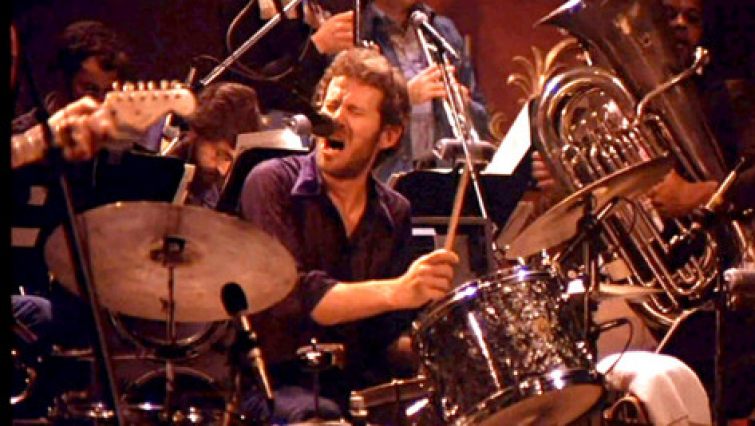
Levon Helm drums and sings, “The Night They Drove Old Dixie Down” in “The Last Waltz.”
Once Were Brothers — an engrossing, touching and well-crafted film — understandably climaxes with two generous clips from The Last Waltz. The Band’s radiant final hurrah was on Thanksgiving Day, 1976, and includes Dylan, Clapton, Muddy Waters, Joni Mitchell, Van Morrison, Neil Young, Dr. John, The Staple Singers, Emmylou Harris, Ringo Starr, Paul Butterfield, Neil Diamond, Ronnie Hawkins, and a brass ensemble.
“Time is the most mysterious word of all,” Norman Mailer once wrote. The Band somehow traversed and encapsulated the mysteries of our time, Because “Life is a Carnival.” and because of “The Night They Drove Old Dixie Down.”
____________
1 Barney Hoskyns, Across the Great Divide: The Band in America, Hyperion, 1993 Quote of Greil Marcus from his book Mystery Train, 3-4 .
2 Hoskyns, Across the Great Divide, 384-85


